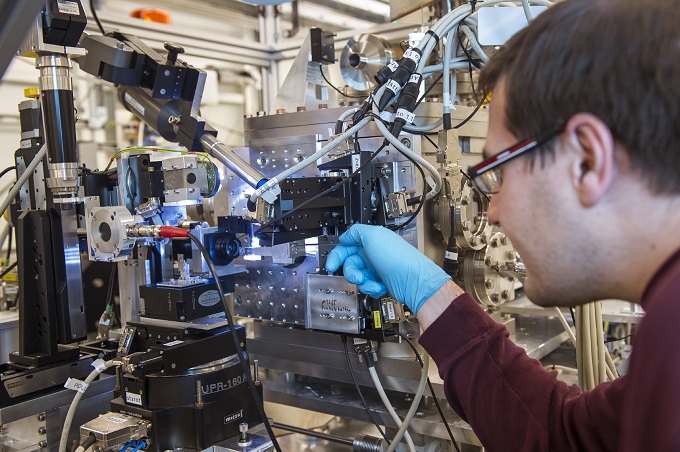Focus on HIREP

Copyright European XFEL
The European Cluster of Advanced Laser Light Sources (EUCALL) has the primary objective of developing synergies between sources of Free Electron Laser radiation and Optical Laser radiation in Europe. To help to achieve this, EUCALL has four technical work packages (WPs) which will deliver new software for simulation and processing of advanced radiation experiments, as well as for new hardware for standardised sample delivery and beam diagnostics for ultra-fast laser experiments.
While every light source has systems for sample replacement, no attempt has been undertaken yet to unify sample characterization and positioning of samples in order to provide external user groups with unhampered access to the facilities. In EUCALL’s WP6 – High Repetition Rate Sample Delivery (HIREP) – an integrated concept for decentralized sample characterization and fast sample positioning at EUCALL’s facilities will be developed. This will result in standardised sample holders and sample stages available for use at each of EUCALL’s facilities. An external user who is trained to operate this equipment at one facility will therefore be able to operate the same equipment at another light source without further training. This will make an exchange of targets between the facilities easier, while for external users, it will offer a more transparent access to the facilities.
During EUCALL’s three year project period, HIREP will deliver a standard sample holder including cooling and heating capacities to be used by all participating institutes and their users, integrated with high precision sample stages with an ultrahigh vacuum–compatible fluorescence and reflection microscope for sample positioning. Automatic sample identification and localization software will also be developed to control the sample stage, which will also be available for all institutes to be integrated in their instrumentation.
Within the first three months since EUCALL’s Kick Off in October 2015, HIREP has already completed two of its Milestones – an agreement about specification for sample holder and sample stages, and an agreement on the list of sample types for the identification software. The list of sample types consists of:
Periodically placed or manufactured targets on a support / substrate of equal or similar shape
- foils placed in a sandwiched holder with holes / windows
- flat cones of tens of µm tip and hundreds of µm base (lithography)
- micro dots with a size from 1 µm to several tens of µm
- reduced mass and nanostructured targets
- micrometer sized biological samples positioned by pick-and-place
- wires spanned across micrometer sized holes / windows
Statistically distributed targets on a support / substrate
- dried out suspension with sphere shaped single particles or clusters of them
- self-organized growth of metallic / semiconductor / insulator micro structures
- solid foams of two chemical components with open surface / pores
- crossing points inside of ravels of filament like materials (nano / micro wires / fibers)
Homogenous materials with defects / cracks / discontinuities
- metallic glasses like GeO2, SiO2(80%)+Na2O2(20%)
- thin films of metal / semiconductor / insulator materials on metal / semiconductor / insulator substrates
- thin films of metal / semiconductor / insulator materials structured with metal / semiconductor / insulator nano and micro structures
This list was agreed on by scientists from six of EUCALL’s participating radiation sources, and shows that scientists from EUCALL's network, representing Free Electron Laser, Synchrotron Radiation and Optical Laser research infrastructures are already cooperating optimally, just three months into EUCALL's three year project period.